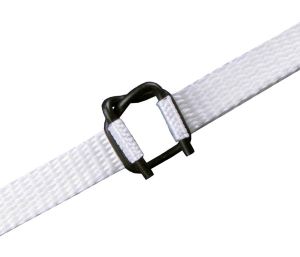
What are Lashing Bands?
All That You Wanted To Know About Lashing Bands
The industrial lifting equipment industry is worth billions of dollars, with equipment ranging from mighty cranes to simple tie-down hardware like wire ropes and hooks. Industrial material handling categories are so diverse that staying updated with the latest offerings could be overwhelming. When it comes to basic tie-down equipment, lashing bands are often underrated. Load securing during hauling or shipping is impossible to imagine without lashing bands.
Lashing bands or ratchet straps tie down or hold equipment or cargo while transported. They’re also called tie-down straps or lashing belts. A lashing band is extremely strong, has high tensile strength, and is durable.
Different Types Of Lashing Bands
Lashing bands are usually made from polyester fabric. These are strong and do not stretch as much. This is especially important when holding down large equipment or cargo. And since they do not absorb moisture, polyester–made lashing belts aren’t prone to mould and mildew. They can fairly withstand UV rays and do not shrink as well. Polyester lashing bands are ideal if your load is prone to expand or settle while being shipped.
Some manufacturers customize lashing bands to match a customer’s specifications. For example, nylon-made lashing bands are ideal for loads that need a little stretch. You can choose from lightweight belts to hold weights up to 3000 kg or buy heavier lashing bands that can tie down cargo up to 10,000 kg.
Steel straps are used for equipment with sharp edges and materials that don’t settle. They can carry the heaviest load without breaking even when carried over long distances.


